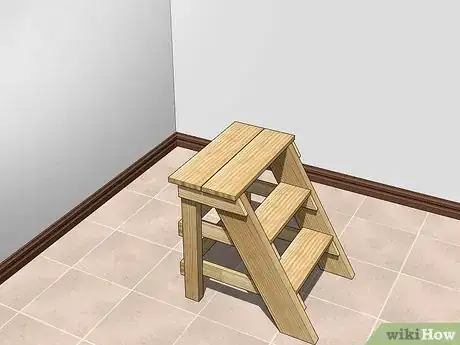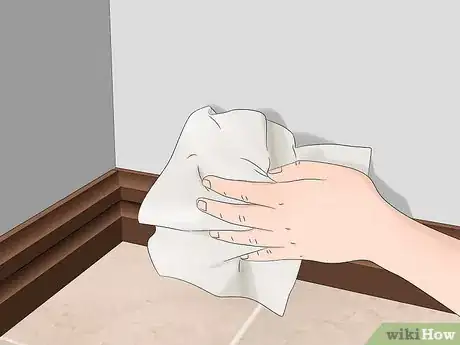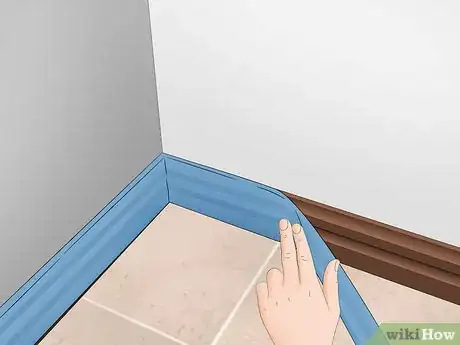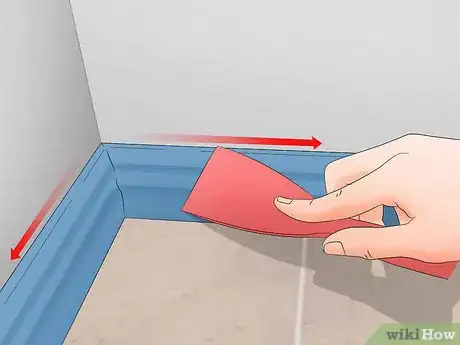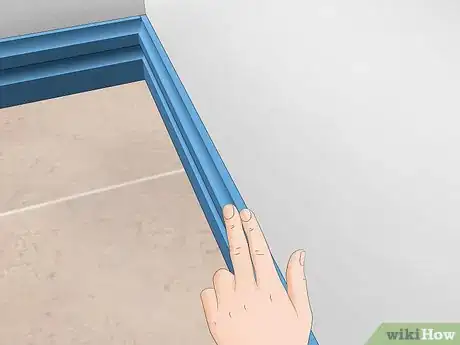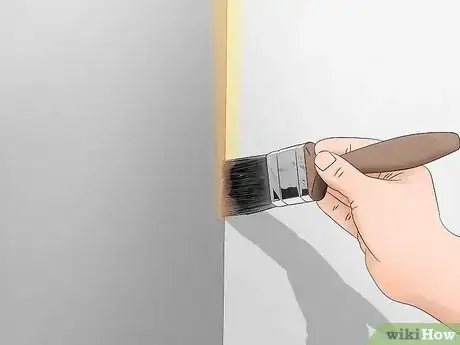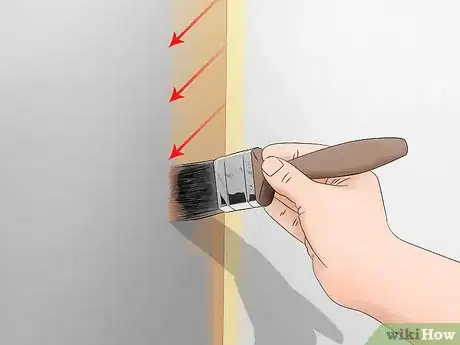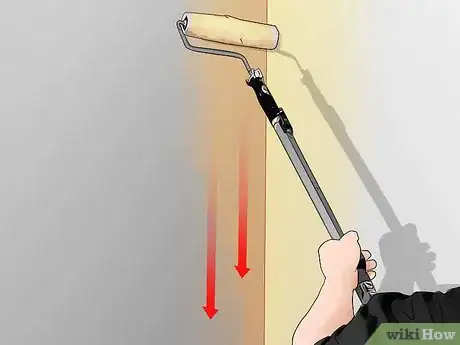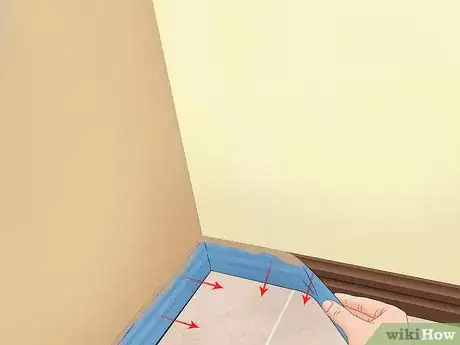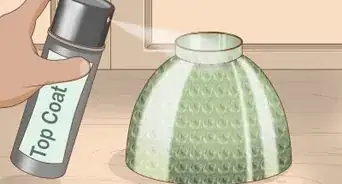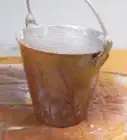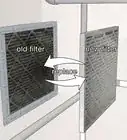This article was co-authored by Andres Matheu and by wikiHow staff writer, Janice Tieperman. Andres Matheu is the Owner of Hömm Certified Painting Systems, an Interior and Exterior Residential painting business based in the Washington, DC Metro area. Andres specializes in interior and exterior residential painting, color consultations, cabinet refinishing, wallpaper removal, and epoxy flooring among other services. An EPA Lead-safe Certified Firm, Hömm Certified Painting Systems has been awarded the Best of Houzz 2019 Service, Angie's List Super Service Award 2019, and Northern Virginia Magazine's 2018 Best Home Experts (painters) award.
There are 9 references cited in this article, which can be found at the bottom of the page.
This article has been viewed 26,334 times.
Whether it's a large or small project, there's a good chance that most painting tasks will involve painting corners. Although painting wall and ceiling corners can be tricky at first, any corner, no matter how hard to reach, can be painted with the proper taping preparations and short, careful brush strokes.[1] With a little bit of patience, you will be able to paint edges and corners that look professionally done.
Steps
Corner Painting Prep Work
-
1Set up a step stool next to the painting site. Before you start painting, you will want to make sure that the spot you plan on painting is easily accessible. If necessary, set up a small step stool or ladder to help you reach the area that you'll be painting. Being closer to the corner will allow you to make steadier, more confident strokes. This can help make your paint job look more professional.
- If you're using a ladder, always have a person nearby to spot you. This can help to prevent any potential injuries.
-
2Wipe the corner baseboard with a moist cloth to remove any dust.[2] You will be applying painter’s tape to prevent any paint from dripping into unwanted areas, so you want to make sure that there is no lingering dust. Wait for the wiped surface to dry before applying any painter's tape.[3]
- Painter's tape will have a smoother application along a clean surface.[4]
- Wipe with a phosphate-free detergent product if the wall or corner area appears to be greasy. This solution can be found at most hardware and home improvement stores.[5]
- If you are working on a ceiling area, wipe down wherever you expect to be placing painter’s tape.[6]
Advertisement -
3Cut a long strip of painter's tape. The length of this strip will depend on the length of your wall. Place the tape along the floor baseboard.[7] Choose a starting point along the edge and ensure that the piece of tape is long enough to reach the corner. [8] Make the piece of tape longer than necessary to ensure that the corner’s edges are completely covered.[9]
- Medium adhesion painter’s tape is a good choice for painted walls, and will help prevent any damage to the wall during the tape removal process.
- Using a painter's tape applicator can help to make the taping process much more efficient. They are available at most stores that sell painting supplies.[10]
- When painting a ceiling corner, secure the painter’s tape along the edge where the ceiling meets the wall.[11]
-
4Secure the painter's tape to the wall with a putty knife. Drag the putty knife along any loose sections of painter’s tape so that they adhere tightly to the wall. Once you have securely bonded the tape to the corner, use a utility knife or other small blade to cut off anything extra. [12]
- A one and a half inch wide putty knife is a good size for most painting projects.[13]
-
5Repeat the taping and sealing process. Using another long strip of painter's tape, cover the other adjoining edge of the wall with painter's tape. Secure this piece of tape with the putty knife.[14]
Painting the Corners
-
1Begin to fill the corner with paint. Use a two-and-a-half inch wide brush and liberally dip into the paint. Start by using your brush to apply paint from the innermost crevice. This will make it easier to paint the areas immediately surrounding the corner.[17]
- If you are painting near a baseboard, be sure to have drop cloths or plastic sheeting laid out to prevent any paint from spilling on the floor.[18]
- If you prefer to use a roller in your painting, consider using a square paint edger. This tool is a mix of a brush and a roller, and will help you reach the inner parts of the corner. Use an extension pole if necessary.[19]
-
2Spread the paint in outward strokes. You will want to keep your brushstrokes short so that you can spread the paint evenly across a small area. Aim to paint at least five short strokes from your initial paint placement.[20]
- Edge rollers can also be effective in providing consistent paint coverage along a straight line.[21]
-
3Keep brushing in short strokes to hide any brush marks. Given the small amount of painting space in a corner, there is a chance that you have lingering brush marks that are visible to the naked eye.
- Give extra care to even out parallel strokes of paint with perpendicular ones.[22]
-
4Switch to a roller to get consistent paint coverage. While a roller may not be able to reach a corner’s crevice, it can help to flatten and level out the existing paint that you have already applied with a brush. Using a roller also eliminates any worry of lasting brush strokes.[23]
-
5Take off the painter's tape. Once the paint has dried, press down on the top of the tape with the thin edge of a putty knife. You will then want to pull the tape off in a clean, steady motion. Ideally, you will want the tape to be forming a 45-degree angle as you remove it from the wall.[24]
Things You'll Need
- Wet wipes
- Painter's tape
- Paint brush
- Paint roller
- Paint roller extension pole (optional)
- Square paint edger
- Putty knife
- Utility knife
- Paint
- Disposable gloves (optional)
- Drop cloths (optional)
- Plastic sheeting (optional)
- Step stool (optional)
Warnings
- Wear a mask if you plan on painting for an extended period of time.⧼thumbs_response⧽
References
- ↑ Andres Matheu. Commercial Painter. Expert Interview. 28 July 2020.
- ↑ Andres Matheu. Commercial Painter. Expert Interview. 28 July 2020.
- ↑ https://www.familyhandyman.com/painting/tips/using-masking-tape-when-painting/
- ↑ https://www.popularmechanics.com/home/interior-projects/how-to/a7858/how-to-paint-in-corners-without-making-a-mess-11032748/
- ↑ https://www.familyhandyman.com/painting/tips/using-masking-tape-when-painting/
- ↑ https://www.popularmechanics.com/home/interior-projects/how-to/a7858/how-to-paint-in-corners-without-making-a-mess-11032748/
- ↑ Andres Matheu. Commercial Painter. Expert Interview. 28 July 2020.
- ↑ https://www.tapeuniversity.com/2017/06/how-do-i-apply-painters-tape-in-corners/
- ↑ https://www.familyhandyman.com/painting/tips/using-masking-tape-when-painting/
- ↑ https://www.familyhandyman.com/painting/tips/using-masking-tape-when-painting/
- ↑ https://www.familyhandyman.com/painting/tips/using-masking-tape-when-painting/
- ↑ https://www.familyhandyman.com/painting/tips/using-masking-tape-when-painting/
- ↑ https://thewirecutter.com/reviews/best-putty-knife/
- ↑ https://www.architecturaldigest.com/story/how-to-paint-a-room
- ↑ https://www.familyhandyman.com/painting/tips/using-masking-tape-when-painting/
- ↑ https://brightnest.com/posts/you-re-3-steps-away-from-faux-crown-molding
- ↑ https://www.realsimple.com/home-organizing/home-improvement/painting/how-paint-corners
- ↑ https://www.architecturaldigest.com/story/how-to-paint-a-room
- ↑ https://inspirationformoms.porch.com/easiest-way-to-paint-tall-walls/
- ↑ https://www.realsimple.com/home-organizing/home-improvement/painting/how-paint-corners
- ↑ https://inspirationformoms.porch.com/easiest-way-to-paint-tall-walls/
- ↑ https://www.realsimple.com/home-organizing/home-improvement/painting/how-paint-corners
- ↑ https://www.realsimple.com/home-organizing/home-improvement/painting/how-paint-corners
- ↑ https://www.familyhandyman.com/painting/tips/using-masking-tape-when-painting/

